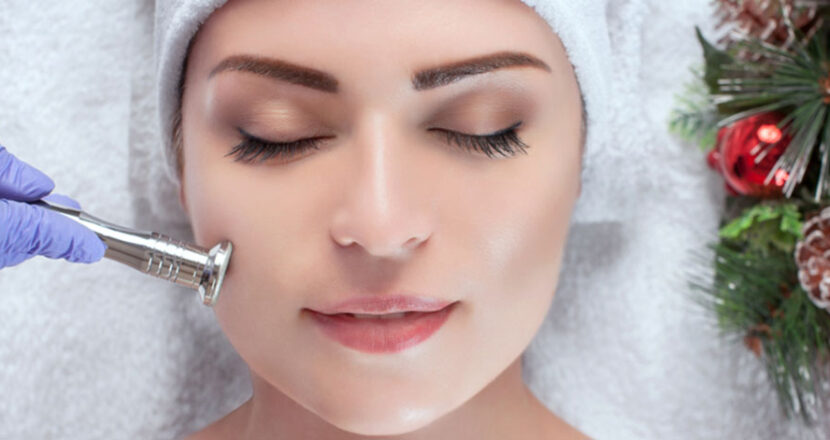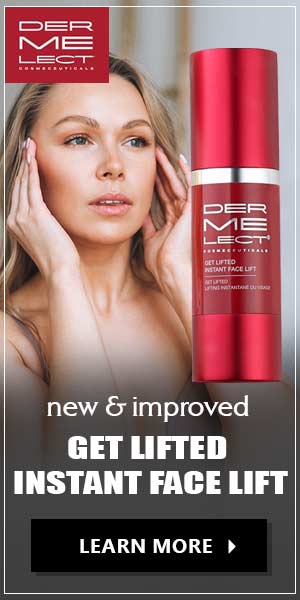From minimizing fine lines to improving the health and appearance of your pores, microdermabrasion has a vast number of benefits, so it’s no surprise that it’s a hugely popular skin treatment.
It is one of the most preferred dermatology treatments in the U.S. today, and thanks to its relatively low cost, it’s a practical choice for patients dealing with minor skin imperfections and early signs of aging [1].
If you’re considering getting microdermabrasion and want to find out more about this procedure, we’ve put together a handy guide with everything that you need to know.
1. The Benefits of Microdermabrasion
For many people, convenience is one of the many significant benefits of microdermabrasion that make this procedure so popular.
And, microdermabrasion is a non-surgical procedure, meaning that it is virtually painless and a safe, effective way of restoring a clear, healthy, and youthful glow to your skin [2].
How does microdermabrasion work?
It sloughs off all the dead, dull layers on the surface of the skin, which in turn stimulates an increase in the production of collagen and promotes skin rejuvenation.
After treatment, many patients notice a drastic improvement in the tone, texture, and color of the treated areas.
Microdermabrasion can be used to treat a wide range of skin complaints, including oily or dull skin, clogged or enlarged pores, fine lines and wrinkles, mild complexion problems such as poor skin texture or uneven pigmentation, and mild acne scars [3].
There are also some health benefits, such as improved circulation and lymph flow, which improve the internal health of the skin.
Find out more about the benefits of microdermabrasion from this source.
2. Uses for Microdermabrasion
Microdermabrasion is most commonly used on the face; however, it can be used on almost any area of the body.
Some common uses include:
Acne and Blackheads:
Microdermabrasion facials can reduce acne by clearing away dead skin cells from the face and cleaning up impurities that can block the pores and lead to pimples and inflammation.
And, it results in improved circulation, which can provide more oxygen and nutrients to the cells. It also stimulates collagen production, leaving the skin feeling softer and more supple [5].
It is a particularly successful treatment for the removal of blackheads; the top of the blackhead can be removed by the exfoliation whilst the suction from the vacuum will remove the remaining hardened oil, resulting in reduced pore size as the pores will no longer be clogged.
Fine Lines and Wrinkles:
If you want to reduce the appearance of fine lines and wrinkles, microdermabrasion is one of the best treatments to use.
Thanks to the natural promotion of collagen production from this treatment, your skin will be renewed, greatly reducing the appearance of these blemishes [4].
Collagen stimulates the skin renewal process, but this slows down with age, so microdermabrasion is a great way to give it a boost.
Scars:
Regardless of where they are on your body, microdermabrasion can greatly reduce the appearance of many different types of scars, including those caused by acne, surgery or accidents [6].
Although scars may take more microdermabrasion treatments than other issues in order to achieve the desired result, it can lead to significant improvement without the pain or long recovery times often necessary for other treatment types.
Stretch Marks:
Stretch marks are scars that begin in the dermis layer of the skin, which can make them difficult to treat. However, there are a number of ways in which microdermabrasion can help to reduce their appearance.
Firstly, the improved production of collagen and elastin from microdermabrasion can help bring more nutrients and promote skin healing from within, which can prevent stretch marks from worsening and improves the effectiveness of skincare products by increasing the depth of penetration that they can achieve.
A combination of microdermabrasion and topical products can help stretch marks fade away.
3. Are There Any Risks Of Using Microdermabrasion?
The good news is that when the treatment is performed by a certified health care professional, microdermabrasion carries minimal risks. Most of the risks associated with this treatment only occur when it is performed in unsterile conditions or when the treatment is not applied correctly.
If the applicator and vacuum used for microdermabrasion are not correctly sanitized, patients are at risk of contracting infections. And, there is a risk that the patient’s skin may be harmed by the fine crystals used to exfoliate if the machine is used incorrectly or set at a strength that is too high.
In addition, there is also a risk that when applied incorrectly, the crystals used for microdermabrasion can enter a patient’s eye and cause irritation.
However, it’s worth bearing in mind that these negative risks of microdermabrasion are extremely rare, and usually only occur when using a practitioner who is not qualified to conduct the treatment.
So, do your research and ensure that your treatment is with a certified and reputable professional to keep your risk of harm to a minimum.
4. Does Microdermabrasion Hurt?
One of the first things that you might be wondering if you have never had the treatment before is whether or not it is going to hurt.
However, bear in mind that it may feel a little uncomfortable during the treatment, and your skin is likely to feel tighter than usual for a few hours afterward.
This treatment should not be painful – it is one of the softest and non-invasive skin treatments available today, whilst still being able to produce great results.
Let the practitioner know if you have particularly sensitive skin; if the suction is set too high, then you may notice some bruising.
Bringing this up prior to the treatment will allow the necessary adjustments to be made to accommodate your skin type.
Whether you want a clearer complexion or need targeted treatment for imperfections, microdermabrasion is an ideal choice of treatment.
FAQ’s:
Que: Does microdermabrasion improve skin texture?
Ans: Yes, it is a minimally invasive procedure used to renew overall skin tone and texture.
Que: What happens to your skin after microdermabrasion?
Ans: After microdermabrasion, your skin will be pink and feel dry and tight (like sunburn or windburn) for about 24 hours.
Que: What are advantages of microdermabrasion?
Ans: Following are the advantages of microdermabrasion:
- Reducing the appearance of fine lines and wrinkles.
- Reducing the appearance of age spots and hyperpigmentation.
- Removing blackheads and swollen pores.
- Tackling acne and any associated scarring.
- Reducing the appearance of stretch marks.
- Getting rid of uneven skin texture and tone.
Que: Does microdermabrasion help collagen?
Ans: Yes, it increases the number of collagen fibers, which become thicker, more tightly packed, and more consistently organized.
Que: How much does microdermabrasion cost?
Ans: The cost of a single session of microdermabrasion treatment ranges between Rs 2,000 and Rs 5,000.
Read Next – Botox Injection: The Side Effects That You Should Know About & Microdermabrasion Vs Chemical Peel
 By Jenn Sinrich
By Jenn Sinrich





